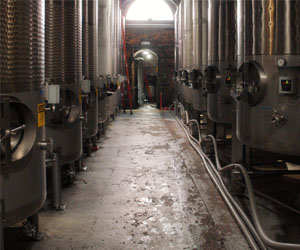


From Earth To Artistry

For millennia, clay has served as a versatile medium for human creativity. Among the many artistic applications of this humble material, clay sculptures stand out as a testament to the enduring fascination with molding, shaping, and creating three-dimensional forms from the earth itself. Clay sculptures have transcended cultural and historical boundaries, evolving from ancient artifacts to contemporary works of art, reflecting the essence of human expression.
The History Of Clay Sculptures: The origins of clay sculptures can be traced back to prehistoric times when early humans fashioned clay into small figurines and objects. These early creations were often utilitarian, serving as fertility symbols or talismans. As civilizations advanced, clay sculptures gained more prominence, taking on religious, decorative, and artistic significance.
In ancient Greece, for example, clay was employed to create intricate figurines, pottery, and votive offerings. The renowned terracotta warriors of China's Qin Dynasty, dating back over 2,000 years, are an exceptional example of the artistry and craftsmanship that can be achieved through clay sculpture. These life-sized, meticulously detailed soldiers were created to accompany the first Emperor of China in his afterlife, attesting to the importance of clay sculptures in historical contexts.
The Techniques Of Clay Sculpting: Clay sculpting encompasses various techniques, with artists employing handbuilding, coiling, slab-building, and wheel-throwing methods. Handbuilding involves directly manipulating the clay by pinching, coiling, and smoothing to create the desired shape. Coiling uses rolled clay ropes to build forms, while slab-building cuts flat pieces of clay to construct sculptures. The potter's wheel is yet another approach, allowing for precision and symmetry in shaping clay.
The Firing Process: One of the defining aspects of clay sculptures is the firing process. After the artist shapes the piece, it is left to dry, followed by firing in a kiln. Kiln temperatures can vary, resulting in different finishes and properties of the sculpture. Low-temperature firing may create porous, unglazed pieces, while high-temperature firing can produce sturdy, vitrified sculptures. The application of glazes before the final firing stage adds color, texture, and depth to the artwork.
Contemporary Clay Sculptures: In the modern art world, clay sculptures continue to captivate audiences. Contemporary artists push the boundaries of traditional clay work, experimenting with forms, textures, and concepts. Clay sculptures are not limited to representational art but often serve as a means for abstract and avant-garde expression.
Some artists use clay to explore environmental and sustainability themes, creating sculptures that comment on the relationship between humans and nature. Others focus on social issues, utilizing clay as a medium to convey powerful messages.
Clay sculptures are not confined to galleries and museums. They have found their way into public spaces, gardens, and homes, enriching our surroundings with their tactile and organic presence. The enduring appeal of clay sculptures lies in their ability to connect the past with the present, the ordinary with the extraordinary, and the earth with artistry.
Clay sculptures are a testament to the enduring appeal of working with the earth's natural resources to create art. From their humble origins as small figurines to the grand, contemporary works of today, clay sculptures have evolved and adapted, yet they remain a profound expression of human creativity and craftsmanship. The history, techniques, and artistic possibilities of clay sculptures continue to captivate artists and enthusiasts alike, making this ancient art form a cherished part of our cultural heritage.


The Art And Science Of Brewing
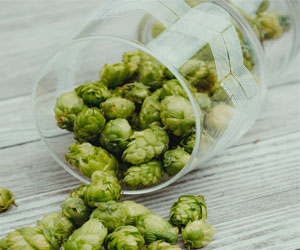 Another crucial aspect of beer craftsmanship is quality control. Craftsmen continually monitor their brews throughout the fermentation and conditioning stages, ensuring consistency and flavor stability. They understand that a small deviation in the brewing process can result in a vastly different beer, and maintaining the intended flavor profile is paramount.
Another crucial aspect of beer craftsmanship is quality control. Craftsmen continually monitor their brews throughout the fermentation and conditioning stages, ensuring consistency and flavor stability. They understand that a small deviation in the brewing process can result in a vastly different beer, and maintaining the intended flavor profile is paramount.
In the craft beer movement, beer craftsmanship goes beyond the brewing process. It extends to branding, marketing, and presentation. Craft breweries often take pride in unique packaging, labels, and taproom aesthetics, offering consumers a complete sensory experience that complements the liquid inside the bottle or glass.
Craftsmen also embrace innovation. They experiment with new ingredients, techniques, and styles, pushing the boundaries of what beer can be. This spirit of innovation has led to the creation of entirely new beer categories, such as sour ales and fruit-infused brews, expanding the palate of beer lovers.
Beer craftsmanship is a blend of tradition, science, and artistry that elevates brewing from a mere beverage production to a true craft. The dedication to sourcing the finest ingredients, the mastery of brewing techniques, and the passion for creating exceptional flavors are all facets of the craftsmanship that defines the world of beer.
The Power Of Hands-On Expression
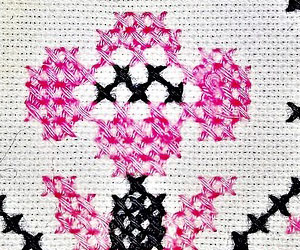 At its core, DIY creativity encourages self-expression. It allows individuals to break free from the constraints of pre-made products and to personalize their world. Whether you're sewing your own clothes, designing custom furniture, or creating unique artwork, DIY projects enable you to infuse your personality and style into every piece. This self-expression not only fosters a sense of ownership but also promotes a deeper connection to the things you make.
At its core, DIY creativity encourages self-expression. It allows individuals to break free from the constraints of pre-made products and to personalize their world. Whether you're sewing your own clothes, designing custom furniture, or creating unique artwork, DIY projects enable you to infuse your personality and style into every piece. This self-expression not only fosters a sense of ownership but also promotes a deeper connection to the things you make.
Engaging in DIY projects fosters a sense of accomplishment. There's an undeniable satisfaction in turning raw materials into a functional item or a work of art. Completing a DIY project instills a sense of pride and boosts self-esteem. It's a tangible reminder of your ability to create and innovate, which can be incredibly empowering.
Moreover, DIY creativity sparks problem-solving skills. Crafting your own solutions to challenges and hurdles in a project can be intellectually stimulating. It encourages critical thinking and resourcefulness as you seek to find the best way to achieve your vision. Whether it's figuring out how to fix a leaky faucet or designing a custom circuit board for a personal electronics project, DIY creativity demands a degree of innovation.
Illuminating The Profound Meanings
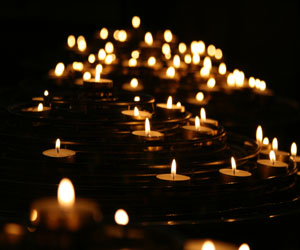 Light And Hope: Candles are often seen as symbols of light piercing through darkness, representing hope and the triumph of good over evil. Lighting a candle can be an act of optimism, a way to banish the shadows, and a beacon of hope during challenging times.
Light And Hope: Candles are often seen as symbols of light piercing through darkness, representing hope and the triumph of good over evil. Lighting a candle can be an act of optimism, a way to banish the shadows, and a beacon of hope during challenging times.
Spirituality And Religion: Candles hold significant importance in many religious and spiritual practices. In Christianity, the lighting of candles in churches signifies Christ as the "light of the world." In Buddhism, candles are lit to symbolize the enlightenment of Buddha, while in Hinduism, they are used during various ceremonies to represent the divine presence.
Memorial And Remembrance: Candles are a powerful symbol of remembrance and reverence. Lighting a candle in memory of a loved one who has passed away is a common practice. It symbolizes that the memory of that person continues to shine in our hearts.
Celebration And Joy: Candles are used during celebrations to symbolize joy and festivity. Birthday candles, for example, signify the joy of another year of life. In many cultures, candles are an essential part of wedding ceremonies, representing the joy and union of the couple.
Protection And Warding Off Evil: In some cultures, candles are believed to have protective qualities. Lighting a candle is thought to ward off negative energy, evil spirits, or bad luck. This belief is often tied to the symbolism of the candle's light dispelling darkness and negativity.
Guidance And Enlightenment: The act of lighting a candle can also symbolize the search for guidance, wisdom, or enlightenment. It is a way of asking for clarity in decision-making, a desire to gain insight, or a call for divine intervention in one's life journey.
Peace And Serenity: Candles have a soothing quality, and their warm glow is associated with peace and serenity. Many people use candles as part of their meditation or relaxation routines, creating a calming atmosphere and symbolizing inner peace.
Connection And Unity: Lighting candles in a group or community setting can symbolize unity and connection. The shared act of lighting candles during vigils, ceremonies, or protests reinforces the sense of togetherness and solidarity.
Tips For Every Enthusiast
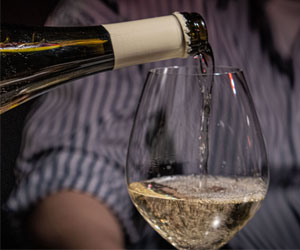 3. Explore Different Wine Glasses: The shape of your wine glass can impact your wine appreciation experience. Specific glass shapes are designed to enhance the aromas and flavors of different wine types. Investing in a set of quality wine glasses can make a noticeable difference in your tasting experience.
3. Explore Different Wine Glasses: The shape of your wine glass can impact your wine appreciation experience. Specific glass shapes are designed to enhance the aromas and flavors of different wine types. Investing in a set of quality wine glasses can make a noticeable difference in your tasting experience.
4. Understand The Importance Of Temperature: Serving wine at the appropriate temperature is vital. Reds, whites, and sparkling wines all have their ideal serving temperatures. Generally, red wines are served slightly warmer than white wines. Invest in a wine thermometer to ensure you're serving your wine at the right temperature.
5. Learn How To Pair Wine With Food: Food and wine pairing can be a magical combination that enhances both the meal and the wine. Certain wines complement specific dishes, bringing out the best in both. For example, try pairing a rich, red Bordeaux with a well-marbled steak or a crisp, acidic Sauvignon Blanc with seafood. Experimenting with pairings is an exciting part of wine appreciation.
6. Start A Tasting Journal: Consider keeping a wine tasting journal to document your experiences. Note the wines you've tried, your impressions, and any interesting details. Over time, this journal can become a valuable reference, helping you remember your favorites and charting your wine journey.
7. Attend Wine Tastings And Events: Wine tastings and events provide a unique opportunity to sample a variety of wines and learn from experts. Local wine shops, wineries, and wine clubs often host tastings, so keep an eye out for these opportunities to expand your palate and knowledge.
The Secrets To Healthy Skin And Hair
 Aloe Vera: Often referred to as the "plant of immortality," aloe vera is a powerful natural ingredient for skin and hair. It contains vitamins, minerals, and enzymes that soothe and hydrate the skin, making it an effective remedy for sunburns and irritations. Aloe vera is also known to promote hair growth and reduce dandruff.
Aloe Vera: Often referred to as the "plant of immortality," aloe vera is a powerful natural ingredient for skin and hair. It contains vitamins, minerals, and enzymes that soothe and hydrate the skin, making it an effective remedy for sunburns and irritations. Aloe vera is also known to promote hair growth and reduce dandruff.
Coconut Oil: Rich in fatty acids and vitamins, coconut oil is a beloved ingredient for both skin and hair care. It provides intense moisturization, leaving skin soft and supple, and helps with hair conditioning and preventing split ends.
Honey: Honey is a natural humectant, meaning it helps the skin retain moisture. Its antibacterial properties make it effective in treating acne, while its antioxidants combat signs of aging.
Shea Butter: Shea butter is a skin superfood. It's packed with essential fatty acids and vitamins that provide moisture and aid in skin repair. It's particularly useful for dry and sensitive skin.
Green Tea: Green tea is rich in antioxidants known as polyphenols, which help combat free radicals and inflammation. Consuming green tea or applying it topically can improve skin texture and protect against UV damage.
Avocado: Avocado is a source of healthy fats, vitamins, and minerals. When applied to the skin, it nourishes and revitalizes, leaving it soft and glowing. It can also be used as a hair mask to add moisture and shine.
Vitamin E: Vitamin E is a powerful antioxidant that can protect the skin from damage caused by free radicals and the sun's harmful UV rays. It is commonly found in many skincare products and can also be obtained through diet or supplements.